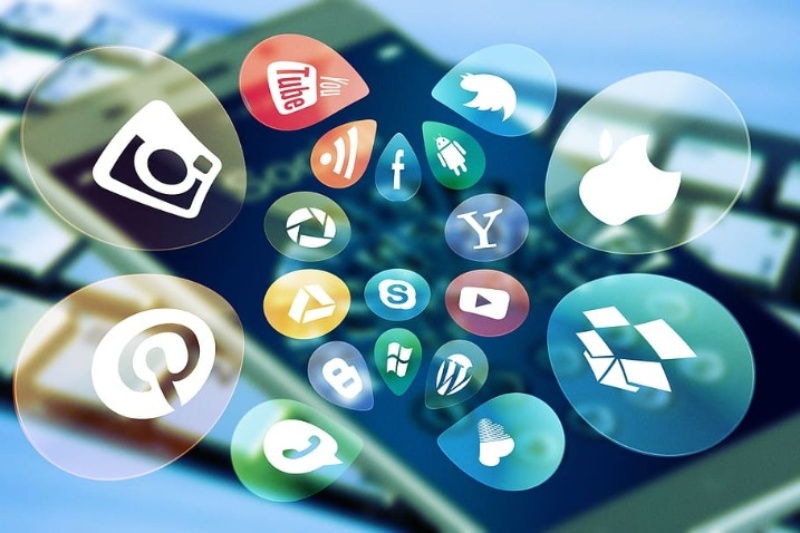
A media company called Mediakix conducted an experiment to determine how easy it is to make fake influencer accounts. They followed the 3 steps mentioned before and were able to build phony influencer accounts. Moreover, they qualified for paid sponsorship deals, which shows how easily people can earn money through fake influencer accounts.
Have you ever wondered if your favorite influencer is a fraud? You’ll find influencers on different social media platforms like Instagram, Snapchat, or Tiktok. Their page might be based on their daily lives or other events, but they are part of a much bigger marketing strategy.
Companies’ products are endorsed and promoted through the influencers’ social media for which they paid. The influencers’ followers may trust the product and purchase it, generating profits for the company. But what if all those followers, likes, and comments on the influencers’ page are fake?
What if all the sponsorship deals influencers claim to have from companies are not authentic? It is possible because becoming a fake influencer has an easy process. If you have the required financial resource and you don’t have any conscience to fool people, then posting fake information and images will be easy.
Lost money to online fraud? We will recover your funds !
How Influencers Make A Fake Presence
- Create Content
People may use their images as content for the page; however, millions of stock images are available online, free of cost and without watermarks, which may be preferred by fake influencers. The followers may or may not be able to tell whether the photos were taken by the account owner or taken from the internet.
- Buy Fake Followers
The next step is purchasing fake followers online, which ranges from $3-$8 per 1,000 followers. Based on these numbers, if a fake influencer has 1 million followers, they would have spent approximately $10,000, which is an enormous amount.
- Buy Fake Engagement
The last step is to buy fake engagements such as likes and comments, which have a price range similar to fake followers. This is done to have an equal ratio between followers and engagement; otherwise, an account with more than 1 million followers and only 10-30 likes and comments would seem odd.

Experiment Conducted By Mediakix
A media company called Mediakix conducted an experiment to determine how easy it is to make fake influencer accounts. They followed the 3 steps mentioned before and were able to build phony influencer accounts. Moreover, they qualified for paid sponsorship deals, which shows how easily people can earn money through fake influencer accounts.
Mediakix created two fictional influencer accounts on Instagram: a fashion and lifestyle influencer and a photography and travel influencer. A model was hired for the first Instagram account, and all the pages content was generated through one photoshoot. Whereas for the second Instagram account, the entirety of the content was stock photos from the internet. Furthermore, stock images of people only showing the back of their heads were also used to make the second account seem more realistic.
After the content generation, Mediakix began posting on the accounts and bought followers for $3-$8 per 1000 followers from online websites. The company started with buying 1,000 followers per day, but later they could buy up to 15,000 followers per day.
At the end of 2 months, Mediakix had accumulated 50,000 followers and 30,000 followers for the first and second accounts, respectively. Similarly, fake engagement was purchased for 12 cents per comment and $4-$9 per 1,000 likes, accumulating around 500-2,500 likes and 10-50 comments for both pages.
A minimum of 10,000 followers was needed to qualify for company deals. After both pages had reached the minimum level of followers, Mediakix registered the two accounts for brand deals. Mediakix was able to get 4 paid brand deals in total, 2 for each account, mainly related to food companies. The “influencers” were offered payment, free products, or both to promote company products.
If you’ve been scammed in social media by a fake influencer then contact us to help you get your money back!
Why are Scam Influencers Problematic for the Marketing Industry?
Brands can promote their products on a large scale, and influencers can earn money or receive free products through sponsorship deals. However, increasing competition in this industry may encourage influencers to purchase fake followers and engagement. The companies would approach influencers with more followers; however, companies will suffer financially because they will be paying the fake influencer to promote products to a market consisting of only phony followers.
So what can you do about these fake influencers?

Top 4 Ways To Identify Scam Influencer Accounts:
- Unusual numbers
You should look at the ratio of followers to engagements and observe an overall engagement rate of 1-3% of their followers. For example, an account with 1,000 followers should have 400-500 likes. If the engagement rate is below 1% or more than 10%, both cases indicate a fake account due to purchasing followers or engagement. Similarly, look at the ratio between following and followers because if the account follows thousands of people, but very few follow them back, that could signify a fake account. Generally, authentic accounts have more followers than their following by a significant amount.
- Fluctuations in engagement
Real accounts have a steady growth in followers and engagement, whereas fake accounts gain large numbers of followers in a short period. This is primarily due to purchasing fake followers online.
- Repetitive or Irrelevant Comments
You should compare comments on different posts from the account and observe any repetitive comments, such as the same emojis or words. There might also be irrelevant or spam comments advertising other products under the influencers’ posts.
- Hidden, Empty, or Fabricated Profile Sections
Real influencers would have a profile picture for their followers to recognize them or have some information in their bios, such as contact emails or the location where they are based. But if some profile sections are kept hidden or not filled in at all, like the bio section or the profile picture, the account could be fake. Moreover, the entire profile section may be copied from other existing, and verified accounts or stock images may be used as the profile picture.
If you still face difficulty identifying real accounts, online services are available to verify accounts for you. For example, Free Instagram Audit & Fake Follower Check website by HypeAuditor. Only the account name has to be entered on their website, and the percentage of real followers and engagement is determined within seconds. To Learn more about how scams work and how to defend yourself from them!
Sources
- https://mediakix.com/blog/fake-instagram-influencers-followers-bots-study/
- https://www.businessinsider.com/heres-how-easy-it-is-to-become-a-fake-instagram-influencer-2017-8
- https://sproutsocial.com/insights/fake-influencers/
- https://influencermarketinghub.com/fake-follower-checker/
We is committed to upholding the journalistic standards online, including accuracy. We report news related to scams and we aim to be accurate in our reporting. Our policy is to review each issue on a case by case basis. Upon becoming aware of any potential error or need for clarification, we try act on it as quickly as possible. Please notify us first so that we can resolve the issue.



